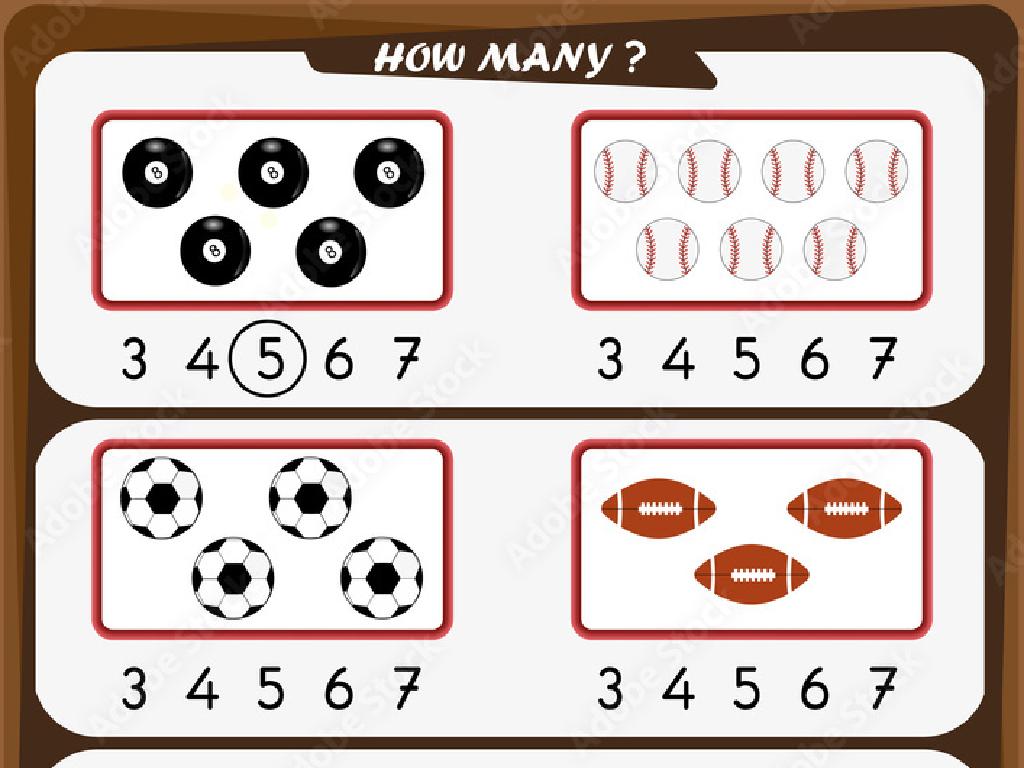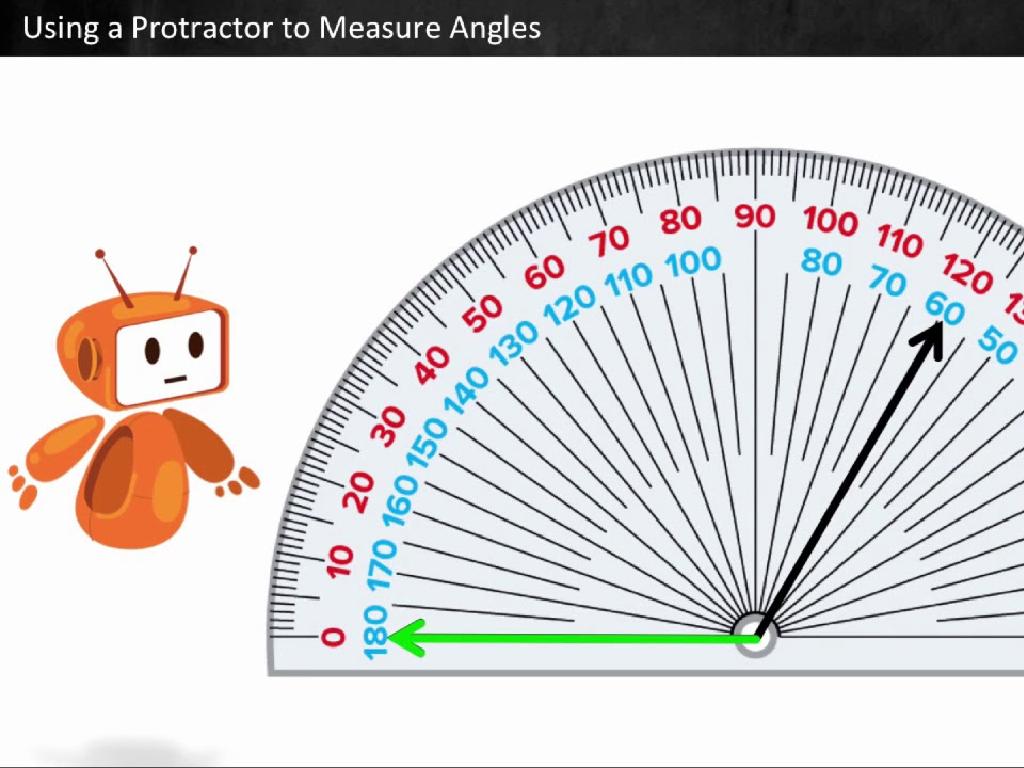Find The Short E Word
Subject: Language arts
Grade: First grade
Topic: Short E
Please LOG IN to download the presentation. Access is available to registered users only.
View More Content
Welcome to Short ‘e’ Sounds!
– Today’s focus: the short ‘e’ sound
– Think of words with the short ‘e’
– Examples: ‘bed’, ‘pet’, ‘net’
– Practice spotting short ‘e’ words
– We’ll find short ‘e’ words together
– Aim to be short ‘e’ experts
|
This slide introduces the concept of the short ‘e’ sound to first graders. Start the lesson by explaining what the short ‘e’ sound is and how it is different from the long ‘e’ sound. Encourage the children to think of any words they already know that contain the short ‘e’ sound. Use visual aids or props if possible to make the lesson more engaging. As you move through the presentation, work with the class to identify short ‘e’ words from a list or a story. By the end of the lesson, the goal is for the students to be more familiar with the short ‘e’ sound and to recognize it in their reading and writing. Plan a variety of activities, such as a word hunt or matching game, to reinforce the lesson in a fun and interactive way.
Exploring the Short ‘e’ Sound
– What is the short ‘e’ sound?
– It’s the ‘e’ in ‘bed’ and sounds like ‘eh’
– Short ‘e’ vs. long ‘e’
– Long ‘e’ sounds like ‘ee’, as in ‘see’
– Examples: ‘bed’, ‘red’, ‘net’
– Words with the short ‘e’ sound are common
– Practice saying the short ‘e’
– We’ll say it together to learn how it sounds
|
This slide introduces the concept of the short ‘e’ sound to first graders, helping them distinguish between short and long vowel sounds. Start by explaining that the short ‘e’ sound is heard in many words they use daily. It’s important to emphasize the difference between the short ‘e’ sound and the long ‘e’ sound by providing clear examples. Engage the class by saying the short ‘e’ sound together and encourage them to mimic the sound. Use visual aids or gestures to help them remember the sound. Practice with words that contain the short ‘e’ to reinforce learning.
Listening for Short ‘e’ Sound
– Play a listening game
– Listen for the short ‘e’ sound
– The short ‘e’ sounds like ‘eh’ as in ‘bed’ or ‘pet’
– Thumbs up if you hear it
– Thumbs down if you don’t
|
This slide introduces a listening activity focused on identifying the short ‘e’ sound. Explain to students that they will listen to words and decide if they contain the short ‘e’ sound. Demonstrate the sound for them, using words like ‘bed’, ‘pet’, and ‘net’. Remind them to show thumbs up if they hear the short ‘e’ sound in the word you say, and thumbs down if they do not. This activity helps students to recognize vowel sounds in words, which is a fundamental skill in reading. Make sure to articulate words clearly and repeat the activity with different words to reinforce learning.
Matching Game: Short ‘e’ Sound
– Match words with short ‘e’
– Look at the picture shown
– I will show a picture, think what it is
– Find the matching word
– Choose the word from the list that sounds like the picture
– Listen for the short ‘e’ sound
– Words like ‘bed’, ‘pet’, ‘net’ have the short ‘e’ sound
|
This slide introduces a matching game to help students recognize the short ‘e’ sound in words. Display pictures that represent words with the short ‘e’ sound, such as a bed, a hen, or a net. Provide a list of words and have students match the picture to the correct word by listening for the short ‘e’ sound. This activity will reinforce phonemic awareness and is a fun way for students to practice their listening and matching skills. For the teacher: Prepare a set of pictures and corresponding words with the short ‘e’ sound. Ensure that the words are simple and familiar to first graders. During the activity, guide the students through the process of sounding out the words and praise their efforts to build confidence.
Short ‘e’ Word Hunt Activity
– Let’s go on a word hunt!
– Find objects with short ‘e’
– Look for items like ‘pen’ or ‘desk’
– Team up and list your finds
– Get ready to share with the class
|
This slide introduces an interactive classroom activity designed to help first graders recognize and understand the short ‘e’ sound in words. The activity involves students moving around the classroom to find objects that contain the short ‘e’ sound in their names, such as ‘pen’, ‘net’, or ‘bed’. They will work in pairs to encourage collaboration and communication, making a list of the words they find. After the hunt, each pair will have the opportunity to share their list with the class, reinforcing their learning and allowing them to practice speaking skills. As a teacher, facilitate the activity by providing guidance on what the short ‘e’ sound is, offering examples, and ensuring a safe and orderly environment as students move around the room.
Let’s Write Short ‘e’ Words!
– It’s your turn to write
– Look at the picture shown
– A picture will be shown on the screen
– Write the word with short ‘e’
– Use your whiteboard to write the word
– Remember the short ‘e’ sound
– The ‘e’ in the word sounds like ‘bed’, ‘red’, or ‘net’
|
This slide is for a class activity focused on writing words with the short ‘e’ sound. Display a series of pictures that represent words with the short ‘e’ sound, such as ‘bed’, ‘pet’, ‘net’, etc. Students will use their whiteboards to write down the word that corresponds to each picture. Remind them to listen for the short ‘e’ sound, which is the same sound they hear in ‘egg’ or ‘elephant’. This activity helps reinforce their phonemic awareness and spelling skills. For differentiation, provide more challenging words for advanced students or offer support by saying the word out loud for those who need it. Encourage students to share their words with the class to build confidence.
Story Time with Short ‘e’
– Listen for short ‘e’ words in the story
– Words like ‘bed’, ‘pet’, and ‘red’
– Raise your hand when you hear one
– Remember the words you find
– Try to keep the words in your mind
– We’ll list the words after the story
– Get ready to share your words
|
This activity is designed to help first graders recognize and remember words with the short ‘e’ sound. As you read the story aloud, students will listen carefully for words that contain this vowel sound. Encourage them to actively participate by raising their hand each time they hear a short ‘e’ word. After the story, facilitate a discussion where students can share the words they found. This will reinforce their understanding and ability to identify the short ‘e’ sound in words. Make sure to praise their efforts and correct any misconceptions. You can extend the activity by helping them use these words in sentences or finding more words with the short ‘e’ sound in other books or classroom materials.
Class Activity: Building Short ‘e’ Words
– Create short ‘e’ words using blocks
– Work together in small groups
– Build as many words as possible
– Share with the class and celebrate
|
This activity is designed to help first graders recognize and practice the short ‘e’ sound in words. Provide students with letter blocks and instruct them to form words that contain the short ‘e’ sound, such as ‘bed’, ‘pet’, ‘net’, and ‘red’. Encourage them to work collaboratively in small groups to foster teamwork and communication. After the activity, each group will present the words they’ve created to the rest of the class. Celebrate their creativity and effort by applauding their word-building skills. This hands-on approach reinforces phonics and word recognition in a fun, interactive way. Possible variations of the activity could include using magnetic letters, writing words on a whiteboard, or drawing pictures to accompany the words they create.
Review: The Short ‘e’ Sound
– Congratulations on learning short ‘e’!
– Share a new short ‘e’ word you learned
– Examples: ‘bed’, ‘pet’, ‘net’
– Listen for ‘e’ in reading
– It’s like the ‘e’ in ‘elephant’
– Practice makes perfect
|
This slide is meant to wrap up the lesson on the short ‘e’ sound. Start by praising the students for their hard work during the lesson. Encourage them to think of new words they have learned that include the short ‘e’ sound and ask for volunteers to share these words with the class. Remind them to keep an ear out for this sound when they are reading at home or in school. Reinforce the idea that the more they listen for and practice the short ‘e’ sound, the better they will become at recognizing and using it. You can end the lesson with a fun activity where students go on a ‘word hunt’ in their favorite books to find short ‘e’ words as homework.
Homework Challenge: Short ‘e’ Sound Hunt
– Find items with short ‘e’
– Like ‘bed’, ‘pet’, or ‘net’
– Draw and label each item
– A drawing of your pet, bed, or a net with the word written underneath
– Three things to discover
– Show and tell tomorrow!
|
This homework activity is designed to reinforce the students’ understanding of the short ‘e’ sound. Encourage them to listen for the short ‘e’ sound in words as they look around their home for items like a ‘bed’, ‘pet’, or ‘net’. They should draw a picture of each item they find and practice their writing skills by labeling each picture with the corresponding word. This exercise combines phonics with creativity and prepares them for a fun show and tell session the next day, where they can proudly share their work with the class. It’s a great way for them to connect sounds to real-world objects and enhance their vocabulary.






